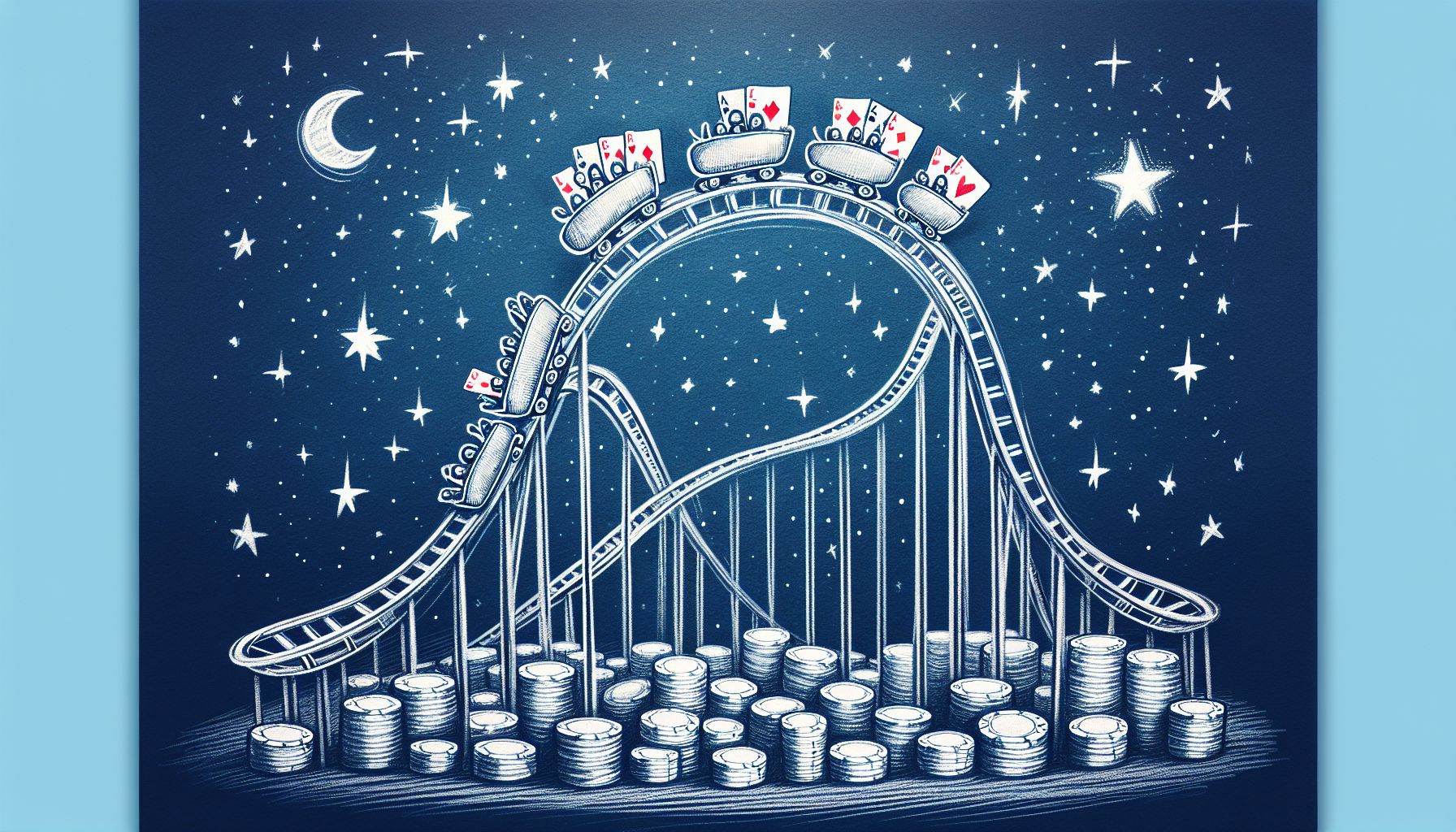Poker is not just a game of chance and skill, but it also demands a certain degree of financial acuity and discipline. In fact, Ups and Downs of Poker one aspect that often distinguishes the full-time professional from the amateur player is bankroll management. This blog post seeks to provide valuable insight into the ups and downs of bankroll management, which is, arguably, just as critical as mastering the statistics, psychology and strategy of poker itself.
Part 1: An Introduction to Bankroll Management
Bankroll management is the practice of managing your poker money – your bankroll – with the aim of not going broke. By making the right decisions on how much to stake, you can ensure the longevity of your poker life and keep adverse effects of losing to the bare minimum.
Financial setbacks in poker are inevitable, Ups and Downs of Poker but what sets successful players apart, is their capacity to survive these downturns. This is where bankroll management comes to play. It allows players to pull through losing periods without taking significant hits to their overall budget. The crux of successful bankroll management relies on risk management – not risking more than necessary to ride out losing streaks while maximizing potential earnings when the odds are favorable.
Part 2: The Logic Behind Bankroll Management
Understanding and embracing bankroll management can be a challenge. It is more than just setting aside a specific amount for poker-playing and involves deploying strategies for stake level decisions based on your comfort with risk, Ups and Downs of Poker your poker skill, and your bankroll size.
It boils down to this: how much are you willing and able to lose? Your answer to this question will be your guide when deciding game stakes. For instance, if your bankroll is $2000 and you are comfortable losing $200, you should not play at tables with $100 buy-ins. Why? Because you could quickly wipe out your funds if you have a few bad games. Instead, you should play at lower stakes where a short run of negative variance won’t assassinate your bankroll. In this instance, you may consider tables with $20 buy-ins. This way, even if you experience a losing streak, your bankroll will absorb the downswing, thus allowing you to get back on track without having to inject more funds into your poker account.
Part 3: Essential Bankroll Management Tips
Here are some pivotal bankroll management tips:
1. Evaluate Your Skill Level:
The level of stakes you should play can be largely influenced by your poker skill level. If you’re just starting out, you will want to start at lower stakes, even if you have a substantial bankroll. The goal should be to climb up slowly while enhancing your poker skills.
2. Determine Your Comfort Level with Risk:
Some players are naturally risk-takers, while others lean towards a cautious approach. If you fall into the first category, you may overlook short-term variance and play at higher stakes. If you fall into the latter, you will likely prefer lower stakes.
3. Stay Disciplined:
Discipline is paramount in bankroll management. You must stick to the rules you set for yourself, no matter how tempting it might be to move to higher stakes. Keep emotions in check and make decisions based on rational thinking.
4. Keep Track of Your Games:
Keep a record of your wins and losses. It will help you understand your win rate, identify your strengths and weaknesses, and help determine the right stakes for you.
Part 4: Managing Downswings
Poker sessions are often colored by variance – the statistical term for luck. Even the most skilled poker players experience winning and losing streaks. As part of bankroll management, you need to prepare for these downswings. Having a robust bankroll will let you survive losing streaks and prevent you from going broke.
Remember, don’t hastily move up to higher stakes to chase losses or to recover a depleting bankroll. Instead, consider moving down to restore your bankroll and build up your confidence again.
Conclusion: The Art and Discipline of Bankroll Management
Bankroll management in poker is a delicate balance between maximizing earnings, limiting losses, and maintaining mental composure. Understanding bankroll management can be the dividing line between poker becoming a costly endeavor or a lucrative pastime.
In the game of poker, harsh fluctuations and downswings are inevitable. However, players who take the time to learn, comprehend and apply solid bankroll management principles are those who are equipped to survive these downturns. Embrace the art of bankroll management and join the ranks of successful poker players who revere this aspect of the game just as much as the strategy behind the cards themselves.


